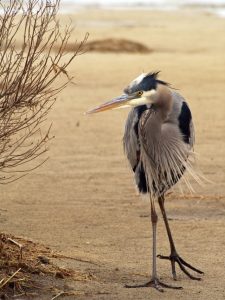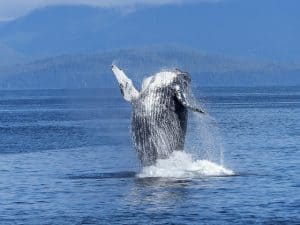Birds are a group of endothermic vertebrates, characterised by feathers, toothless beaked jaws, the laying of hard-shelled eggs, a high metabolic rate, a four-chambered heart, and a lightweight but strong skeleton. Birds live worldwide and range in size from the 5 cm bee hummingbird to the 2.75 m ostrich. They rank as the class of tetrapods with the most living species, at approximately ten thousand, with more than half of these being passerines, sometimes known as perching birds or, less accurately, as songbirds.
Fossil records and modern advances in “reverse evolution” genetic engineering indicate that birds are the last surviving dinosaurs, termed avian dinosaurs, having evolved from feathered ancestors within the theropod group of saurischian dinosaurs. True birds first appeared during the Cretaceous period, around 100 million years ago.
DNA-based evidence finds that birds diversified dramatically around the time of the Cretaceous–Paleogene extinction event that killed off all other dinosaurs. Birds in South America survived this event and then migrated to other parts of the world via multiple land bridges while diversifying during periods of global cooling.
Primitive bird-like dinosaurs that lie outside class Aves proper, in the broader group Avialae, have been found dating back to the mid-Jurassic period. Many of these early “stem-birds”, such as Archaeopteryx, were not yet capable of fully powered flight, and many retained primitive characteristics like toothy jaws in place of beaks, and long bony tails.
It may be hard for an egg to turn into a bird: it would be a jolly sight harder for it to learn to fly while remaining an egg. We are like eggs at present. And you cannot go on indefinitely being just an ordinary, decent egg. We must be hatched or go bad.
C. S. Lewis
 Birds have wings which are more or less developed depending on the species; the only known groups without wings are the extinct moas and elephant birds. Wings, which evolved from forelimbs, give most birds the ability to fly, although further speciation has led to some flightless birds, including ratites, penguins, and diverse endemic island species of birds. The digestive and respiratory systems of birds are also uniquely adapted for flight. Some bird species of aquatic environments, particularly the aforementioned flightless penguins, and also members of the duck family, have also evolved for swimming. Birds, specifically Darwin’s finches, played an important part in the inception of Darwin’s theory of evolution by natural selection.
Birds have wings which are more or less developed depending on the species; the only known groups without wings are the extinct moas and elephant birds. Wings, which evolved from forelimbs, give most birds the ability to fly, although further speciation has led to some flightless birds, including ratites, penguins, and diverse endemic island species of birds. The digestive and respiratory systems of birds are also uniquely adapted for flight. Some bird species of aquatic environments, particularly the aforementioned flightless penguins, and also members of the duck family, have also evolved for swimming. Birds, specifically Darwin’s finches, played an important part in the inception of Darwin’s theory of evolution by natural selection.
Some birds, especially corvids and parrots, are among the most intelligent animals; several bird species make and use tools, and many social species pass on knowledge across generations, which is considered a form of culture. Many species annually migrate great distances. Birds are social, communicating with visual signals, calls, and bird songs, and participating in such social behaviours as cooperative breeding and hunting, flocking, and mobbing of predators.
The vast majority of bird species are socially monogamous, usually for one breeding season at a time, sometimes for years, but rarely for life. Other species have polygynous or, rarely, polyandrous breeding systems. Birds produce offspring by laying eggs which are fertilized through sexual reproduction. They are usually laid in a nest and incubated by the parents. Most birds have an extended period of parental care after hatching. Some birds, such as hens, lay eggs even when not fertilized, though unfertilized eggs do not produce offspring.
Many species of birds are economically important. Domesticated and undomesticated birds are important sources of eggs, meat, and feathers. Songbirds, parrots, and other species are popular as pets. Guano is harvested for use as a fertilizer. Birds prominently figure throughout human culture. About 120–130 species have become extinct due to human activity since the 17th century, and hundreds more before then. Human activity threatens about 1,200 bird species with extinction, though efforts are underway to protect them. Recreational birdwatching is an important part of the ecotourism industry.












 “Angels are a light for monks, monks are a light for laymen”. The Orthodox Church measures its health by the quality of its monks and nuns. Orthodox monastics separate themselves from the world in order to pray unceasingly for the world. They do not, in general, have as their primary purpose the running of social services, as is common in Western Christianity,[citation needed] but instead are concerned with attaining theosis, or union with God.
“Angels are a light for monks, monks are a light for laymen”. The Orthodox Church measures its health by the quality of its monks and nuns. Orthodox monastics separate themselves from the world in order to pray unceasingly for the world. They do not, in general, have as their primary purpose the running of social services, as is common in Western Christianity,[citation needed] but instead are concerned with attaining theosis, or union with God.


 Birds have wings which are more or less developed depending on the species; the only known groups without wings are the extinct moas and elephant birds. Wings, which evolved from forelimbs, give most birds the ability to fly, although further speciation has led to some flightless birds, including ratites, penguins, and diverse endemic island species of birds. The digestive and respiratory systems of birds are also uniquely adapted for flight. Some bird species of aquatic environments, particularly the aforementioned flightless penguins, and also members of the duck family, have also evolved for swimming. Birds, specifically Darwin’s finches, played an important part in the inception of Darwin’s theory of evolution by natural selection.
Birds have wings which are more or less developed depending on the species; the only known groups without wings are the extinct moas and elephant birds. Wings, which evolved from forelimbs, give most birds the ability to fly, although further speciation has led to some flightless birds, including ratites, penguins, and diverse endemic island species of birds. The digestive and respiratory systems of birds are also uniquely adapted for flight. Some bird species of aquatic environments, particularly the aforementioned flightless penguins, and also members of the duck family, have also evolved for swimming. Birds, specifically Darwin’s finches, played an important part in the inception of Darwin’s theory of evolution by natural selection.


 For solid objects like human bones and muscles, this added pressure is not much of a problem; but it is a problem for any air-filled spaces like the mouth, ears, paranasal sinuses and lungs. This is because the air in those spaces reduces in volume when under pressure and so does not provide those spaces with support from the higher outside pressure. Even at a depth of 8 ft underwater, an inability to equalize air pressure in the middle ear with outside water pressure can cause pain, and the tympanic membrane can rupture at depths under 10 ft (3 m).
For solid objects like human bones and muscles, this added pressure is not much of a problem; but it is a problem for any air-filled spaces like the mouth, ears, paranasal sinuses and lungs. This is because the air in those spaces reduces in volume when under pressure and so does not provide those spaces with support from the higher outside pressure. Even at a depth of 8 ft underwater, an inability to equalize air pressure in the middle ear with outside water pressure can cause pain, and the tympanic membrane can rupture at depths under 10 ft (3 m).